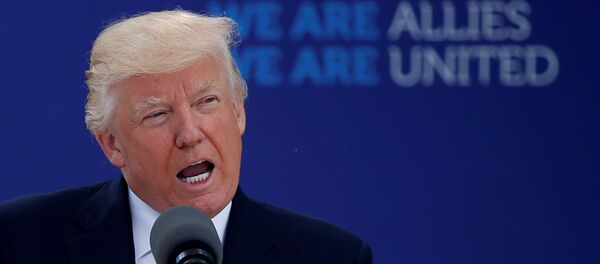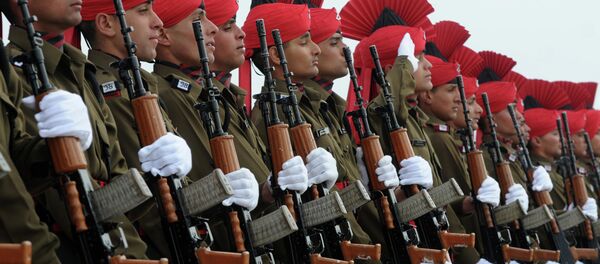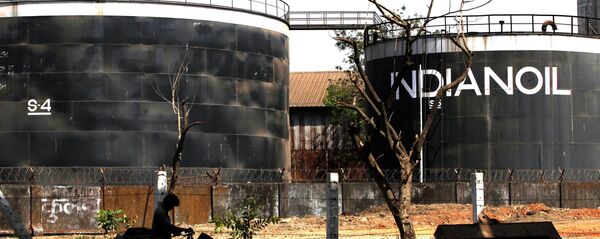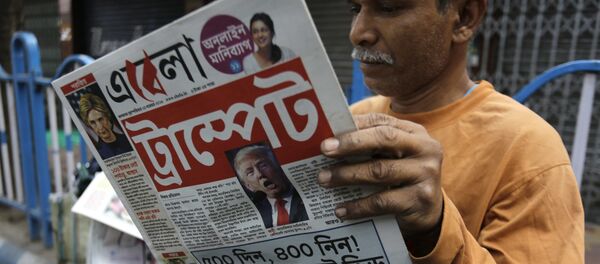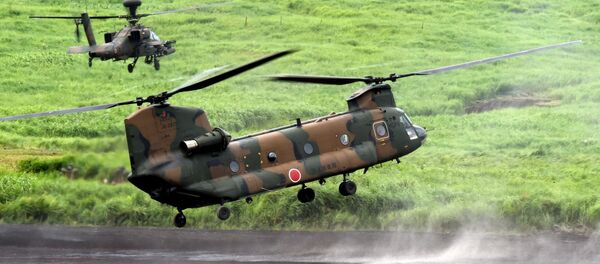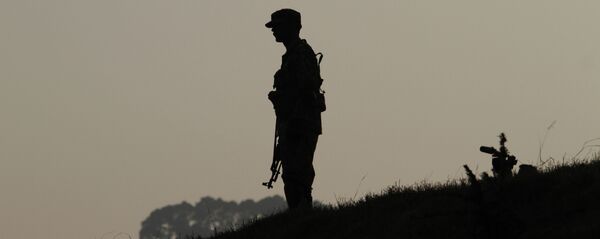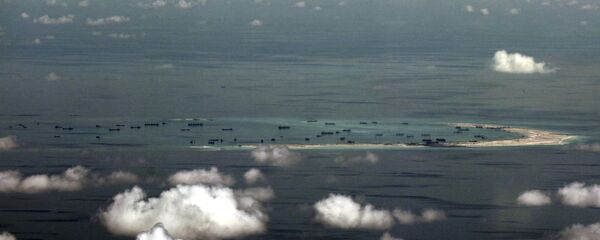WASHINGTON (Sputnik) — Modi was once denied a US diplomatic visa over accusations he was involved in religious rights violations, but he built good relations with former US President Barack Obama.
India's The Hindu newspaper noted this week that Trump has criticized India's import tariffs and accused the country of taking "billions and billions" of US aid dollars to find its commitments under the Paris climate agreement.
The Trump administration also restricted H1B visas, which have affected Indian software companies, compounding a broader stagnation. The country's information technology sector is growing at its slowest pace in a decade.
Trump and Modi are expected to meet one-on-one at the White House and forego a more formal meeting. Neither side has indicated any major deals will be announced, but they could reach agreements on trade and counterterrorism.
Indian Ministry of External Affairs spokesperson Gopal Baglay said Thursday that Modi will have official talks with Trump on Monday followed by other events.
"One of the agendas of the visit or the areas of focus is how to further push and develop economic and commercial cooperation between the two countries for the mutual benefit. That certainly will be in the focus," Baglay said.
The White House said on June 12 that the two leaders will talk about strengthening bilateral ties and expanding security cooperation in the Pacific.
EXPANDING STRATEGIC AND DEFENSE RELATIONS
As of 2015, India was the world's largest weapons importer with an annual defense budget of $50 billion. The 2017 defense budget was set at $53.5 billion. The country has signed $15 billion worth of defense deals with Washington since 2008.
Since taking office in 2014, Modi has opened India to foreign direct investment and sought to promote the country to international companies, especially tech corporations.
In January 2016, the Indian Ministry of External Affairs said the US-India relationship had expanded into "a global strategic partnership" based on shared values and "increasing convergence of interests" on global and regional issues.
At that time there were more than 50 bilateral dialogue mechanisms between the two countries, ranging from strategic cooperation to education and development; trade and agriculture; science and technology; and homeland security.
The United States recognized India as a "major defense partner" on par with other allies and has expressed a commitment to the country's military strength.
Last August, the United States and India signed a logistics service accord that allows the countries to access each other’s military bases for repair works and supplies.
On February 15, the two nations signed another deal to enhance bilateral defense, security and economic cooperation.
The DTTI spawned a number of science and and research agreements, the high-tech weapons the two nations planned to co-produce under the forum have not materialized. In particular, India has sought to cooperate with the United States on aircraft carrier and jet technology.
In 2015, DTTI identified four projects for joint development. Two projects, the development of a new RQ-11 Raven drone, and roll-on kits for the Lockheed Martin C130J Hercules, were never completed. According to media reports, India sought to purchase more powerful drones such as the Reaper.
US media reported on Friday that the United States could approve India to purchase $2 billion in drones. The specific type of drone has not been announced.
A senior White House official said the administration wouldn’t talk about arms sales before they come in Congress, but "the United States is very much interested in facilitating India’s defense modernization and helping to enhance its role as a leader in the Asia-Pacific."
Two other pending agreements — the Basic Exchange and Cooperation Agreement (BECA) and Communication and Information Security Memorandum of Agreement (CISMOA) have not been signed.
BECA would create a data-sharing agreement on navigation, while CISMOA would allow the United States to share encrypted communications technology with India.
On June 21, the US Energy Department announced a $30 million five-year project to advance the development of a new power grid in India.
The Energy Department is committing $7.5 million to the project while the Indian Ministry of Science and Technology and industry partners will match it, bringing the total to $30 million to over five years.
A White House official said Trump and Modi would likely discuss the energy issue on Monday, including possible exports of liquefied natural gas.
As of January 2016, India's aggregate defense acquisition from the United States topped $13 billion. The country has continued to advance defense since then, mostly recently launching a nuclear-capable Prithvi II surface-to-surface ballistic missile on June 2.
On May 18, the first batch of 155-mm lightweight M777 Howitzers was delivered to India, a month earlier than scheduled. In January, the US Defense Department awarded BAE Systems the contract to provide 145 M777 howitzers to the Indian military.
Later that month, the US State Department approved the sale of chemical, biological, radiological, and nuclear (CBRN) protective clothing and support equipment to India for $75 million.
The order also includes nuclear, biological and chemical bags, aprons, trousers, gloves, boots, and training and logistics support.
CHINA AND TERROR THREATS
Speaking ahead of Modi’s visit, Chinese Foreign Ministry spokesperson Geng Shaung on Friday called on India and the United States to "play a constructive role" to maintain stability in the South China Sea.
A White House official said there are no plans to change the visa applications or discuss H1B visas during Modi’s trip.
While Trump has grown closer to Chinese President Xi Jinping since taking office, relations between China and India have deteriorated in recent years. Beijing recently vetoed India’s attempt to join the Nuclear Supplier Group, and India has countered by joining the South China Sea dispute.
India has in part become embroiled in the South China Sea in retaliation for China's support of Pakistan.
At the United Nations General Assembly last year, Chinese Prime Minister Li Keqiang told Pakistan Premier Nawaz Sharif that Beijing supports Pakistan "and will speak for Pakistan in every forum," according to Pakistan Today.
Speaking in New Delhi last August, then Secretary of State John Kerry proposed a three-way dialogue between the United States, India and Afghanistan to counter Pakistan’s influence in the country.
India views the country as a threat, especially as tensions have escalated again in the disputed Kashmir region.
Modi’s personal disputes with Pakistani officials lead back to his time as minister of Gujarat. His Bharatiya Janata Party has ties to paramilitary groups that have a history of violence against the country’s Muslim population, and Modi has been accused of failing to act to stop Muslims from being killed in the 2002 riots in Gujarat.
It was those actions that led to his being denied a US diplomatic visa in 2005.
Last week, members of the Lashkar-e-Taiba extremist group ambushed and killed six Indian police officers in Kashmir. The assault came less than two weeks after a suicide bombing attack on the Central Reserve Police Force camp in Sumbal near the Kashmiri city Srinagar.
In a February phone call, US Secretary of State Rex Tillerson and Indian Foreign Minister Sushma Swaraji agreed to cooperate closely in the fight against terrorism, according to the Indian Foreign Ministry.
Discussions could include new initiatives on counterterror cooperation, data-sharing and screening, according to the White House.
The country has dealt with the threat of Daesh terror group (banned in Russia). In April, Indian police carried out raids in five states and arrested three men suspected of having links to the group.
According to the media outlet, those arrested are from the cities Jalandhar, Mumbai and Bijnor, and are suspected of being members of a local Daesh cell and recruiters of potential terrorists.
In March, the terror group claimed its first attack in India, a train bombing near Madhya Pradesh that injured 10 people.



